
Japanese Wagyu Beef: Essential Guide to Japan's Gourmet Steak (+Recommended Restaurants in Tokyo, Osaka & Kyoto)
- Written by: LIVE JAPAN Editor
Every gourmet knows Japanese wagyu beef, the famous meat that fetches prices over three times higher than American beef commonly available in Japan (*1).
Wagyu is often called “the most expensive beef in the world,” with brands such as Kobe beef and Matsusaka beef being praised as cultivating the “art of meat,” raising every animal carefully and under rigorous management. Enjoying this beef delicacy is on the must-do list of many a visitor to Japan.
But what makes this beef so special? How do you choose a restaurant and order the best cut? And is Japanese wagyu beef just another name for Kobe beef?
We’ve compiled a guide to answer your questions and help you navigate the vast world of wagyu!
(This article contains affiliate links)
What is Japanese Wagyu Beef?
"Wagyu" (和牛) means "Japanese beef." It refers to four specific, purebred cattle breeds: Kuroge (Japanese Black), Akage (Japanese Brown), Nihon Tankaku (Japanese Shorthorn), and Mukaku (Japanese Polled). This classification was established in 1944.
Cross-breeding with other cattle varieties is prohibited for these four wagyu breeds. Their lineages were developed by cross-breeding with European cattle in the late 19th and early 20th centuries. A key ancestor of the dominant Japanese Black breed is the Tajima cattle.
In Japan, "domestic cattle" (国産牛) is a broader term that refers to all cows raised in the country, including the four wagyu breeds as well as others like Angus, Jersey, or Holstein. Even imported cattle can be considered domestic if they are fed in Japan for a longer period than they were overseas.
Japanese Wagyu Beef Breeds

- Japanese Black
- (Kuroge)
- Japanese Brown
- (Akage)
- Japanese Shorthorn
- (Nihon Tankaku)
- Japanese Polled
- (Nihon Mukaku)
- Wagyu
- (Wagyu)
- Holstein
- (Horusutain)
- Jersey
- (Jājī)
- Angus, etc.
- (Angasu)
About Wagyu Brands and Grades
A lot of Japanese restaurants offer Japanese wagyu beef and barbecue dishes – so how do you know the quality of the beef? The main criteria to be on the lookout for are brand and grade. Let's take a look at both.
Wagyu Brand
The brand of the beef indicates its production area. The three most famous Japanese wagyu beef areas are Kobe beef from Hyogo Prefecture, Matsusaka beef from Mie Prefecture, and Omi beef from Shiga Prefecture.
In total, Japan boasts over 150 beef brands from the Japanese Black breed alone. So if a restaurant offers wagyu, it’s a good idea to check (or ask for) the brand or production area.
Wagyu Grading
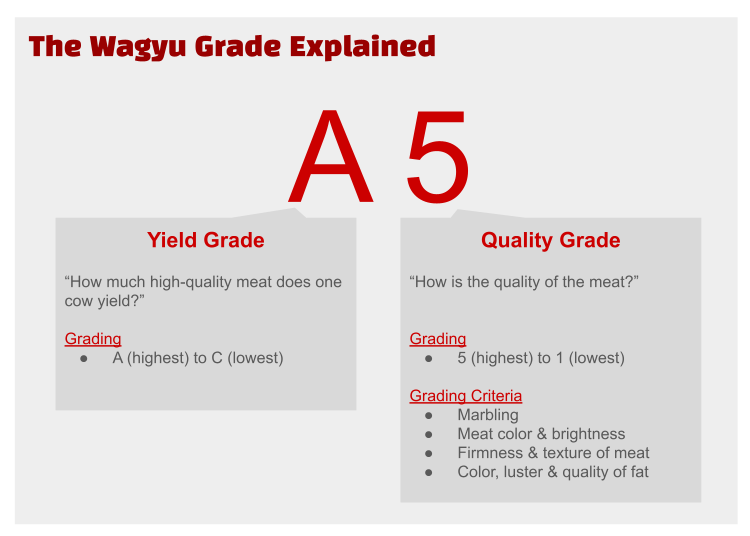
The other important indicator of wagyu quality is the grade. You'll often see grades like "A5" written on a restaurant's signboard or menu. This classification is a universal system awarded by a member of the Japan Meat Grading Association.
The first letter, from A to C, is the Yield Grade. This measures the ratio of meat to the carcass weight (not counting parts such as skin and internal organs). 'A' indicates the highest yield.
A number between 1 and 5 then follows this letter – this is the "Quality Grade." Four criteria determine this grade: marbling, meat color and brightness, firmness and texture, and fat color, luster, and quality.
As such, A5 is the highest grade that Japanese wagyu beef can achieve and is also the most expensive. Knowing this system will be a tremendous help when choosing a restaurant or what to order.
As of August 2025, wholesale Tokyo market prices for A5 Wagyu carcass averaged around 2,450 yen per kilogram — several times higher than imported beef — which helps explain why these brands command luxury status on menus, even in Japan (*2).
Japanese Beef: The Most Popular Wagyu Cuts

Just like any beef, wagyu has all sorts of different cuts, each with its own unique flavor and aroma. The most sought-after is sirloin meat (サーロイン / sāroin), generally used to make wagyu steak or sukiyaki.
The meat around the loin boasts a fine marbling, making it one of the best cuts for savoring the characteristic taste of Japanese wagyu. Another great choice is the rib roast (リブロース, riburōsu), offering a nice balance between marbled and lean meat and is most often used for shabu-shabu, a Japanese fondue.
Other prime cuts of include chuck flap (ハネシタ, haneshita), which makes for a roast of the highest quality, as well as bottom flap (カイノミ, kainomi), a small, delicious part of the rib area.
Many Japanese-style barbecue restaurants, called yakiniku, serve rare cuts so scarce that each Japanese cow only yields a small amount. Below is a list of popular cuts among Japanese gourmets.
1) Wagyu Sirloin (サーロイン / sāroin)
・ Description: The classic premium steak cut from the loin, highly prized in Japan.
・ Appearance: Fine, snowflake-like marbling spread evenly through the meat.
・ Taste: Rich and buttery, with a melt-in-your-mouth texture and long umami finish.
・ Try as: Steak, shabu-shabu, sukiyaki.
・Note: In August 2025, Wagyu sirloin was trading around 3,600 yen/kg wholesale, one reason it remains one of the most prized steak cuts (*2).
2) Wagyu Skirt Steak (ハラミ / harami)
・ Description: The diaphragm, a cut from the plate. Sometimes called “sagari.” Though it's a muscle, it's often categorized as offal in Japanese cuisine due to its location near the internal organs.
・ Appearance: Deep red with visible muscle fibers.
・ Taste: Juicy and beef-forward with a satisfying chew, less fatty but still tender compared to Western flank steak.
・ Try as: Barbecued with a rich tare sauce.
3) Wagyu Offal (ホルモン / horumon)
・ Description: Internal organs, most often large intestine (シマチョウ / shimachō), a specialty at yakiniku shops
・ Appearance: White, fatty pieces that sizzle dramatically on the grill.
・ Taste: Bold, savory, and chewy, with richness that pairs perfectly with sauce and beer.
・ Try as: Grilled until crisp at yakiniku, dipped in a strong miso or soy-based sauce.
4) Wagyu Ribs (カルビ / karubi or kalbi)
・ Description: “Kalbi” is the Korean word for rib and generally refers to beef ribs.
・ Appearance: Thin slices of lean and marbled meat with beautiful contrast.
・ Taste: Sweet-savory umami as the fat caramelizes, juicy and tender but not overly fatty.
・ Try as: Lightly salted or with tare sauce at yakiniku; a must-try beginner cut.
5) Wagyu Brisket (肩バラ / katabara)
・ Description: From the breast or lower chest, a tougher cut with alternating fat layers.
・ Appearance: Layered meat and fat, slightly coarse texture.
・ Taste: Deep, hearty beef flavor that softens when slow-cooked, offering satisfying chew..
・ Try as: Simmered in stews, ground into hamburg steak, or braised until tender.
6) Wagyu Tongue (タン / tan)
・ Description: Thin-sliced beef tongue, a classic yakiniku specialty.
・ Appearance: Pale pink slices, often around 5-8 cm in size or larger.
・ Taste: Unique, lightly beefy flavor with a springy bite; refreshing rather than fatty.
・ Try as: Grilled just seconds per side, finished with salt and lemon juice.
7) Wagyu Chuck Eye (肩ロース / katarōsu)
・ Description: Cut from between the shoulder and rib, a versatile roast cut.
・ Appearance: Marbled through the center, with more fat near the head side.
・ Taste: Balanced, juicy, and tender, with a good mix of lean meat and Wagyu richness.
・ Try as: Thinly sliced in sukiyaki or shabu-shabu, where it absorbs broth beautifully.
8) Wagyu Ribeye, Spencer Roll (リブロース / riburōsu)
・ Description: From around the back and the ribs. One of the most luxurious cuts, Wagyu ribeye fetched about 5,500 yen/kg wholesale in 2025 — double or more the price of Holstein beef ribeye (*2).
・ Appearance: Striking marbling that looks like lace throughout the meat.
・ Taste: Intensely rich and tender, with a buttery mouthfeel and waves of umami.
・ Try as: Thick-cut steak for a splurge, sukiyaki for indulgence, or shabu-shabu for melt-in-your-mouth slices.
Tajima Cattle: Root of all Wagyu

At yakiniku shops, barbecue specialty restaurants and steakhouses, you'll often see the word "Kuroge (黒毛),"or Japanese Black, on both menus and signboards. Among the four breeds, Japanese Black makes up the vast majority of wagyu, a whopping 95%.
The most famous brands and areas—including Yonezawa, Miyazaki, and Sendai, as well as the three big wagyu brands of Kobe, Matsuzaka, and Omi—are all Japanese Black.
As mentioned earlier, the common ancestor of the four wagyu strains is Tajima wagyu cattle, used for farming and agriculture since ancient times. Cross-breeding with European cattle made the meat of the Tajima cattle incredibly delicious. It is rich in "good fats," such as Omega-3 and Omega-6 fatty acids, as well as monounsaturated fatty acids.
That's also the reason for the wonderfully smooth mouthfeel of wagyu, a characteristic that made it famous all around the world. Virtually all Japanese Black beef in Japan can be traced back to Tajima cattle.
Wagyu Tips and Tricks
Reading the Menu in Japan
Yakiniku (Japanese barbecue) restaurants especially boast menus with a large variety of cuts and dishes. Instead of "kalbi (ribs)," you'll often see things like 上カルビ (jō-kalbi) or 上ロース (jō-rōsu).
The 上 character means "up" or "above" and generally indicates that the meat is fattier than usual and of a slightly higher quality. Another often-used expression with a similar meaning is 特選 (tokusen), meaning "special selection."
Other characters you will come across in front of dish or cut names are 塩 (shio), meaning salt, and ネギ (negi), meaning green onion. This means the restaurant has been marinated in sauce containing these, or recommends trying the meat with these specific seasonings or toppings. If you're not sure, don't hesitate to ask the staff!
Yakiniku Barbecue: Tasting Different Cuts

Japanese Black wagyu is used in many dishes, including classics such as steak and sukiyaki. However, one of the best ways to savor and try unique cuts is at a yakiniku restaurant.
To get an authentic experience, look for restaurants that buy an entire cow. This allows them to serve a wide variety of cuts—from common ones like sirloin and ribeye to rare delicacies like chuck flap and inner shoulder—at more reasonable prices. We highly recommend ordering an assortment of cuts on your first visit. This gives you the chance to try a beautiful balance of marbled and lean meat, perfectly bringing out the unique flavor of Japanese Black wagyu.
How Much is Wagyu in Japan? Wagyu for Every Budget

Most people expect to pay a ridiculously high price for Kobe, Matsusaka, or Omi beef. However, not all places serving wagyu are upscale and expensive.
Next to these three famous brands, Japan has a large variety of wagyu producers. Some brands may not be as famous internationally, but they taste great and are far more budget-friendly. A typical wagyu steak at a mid-range restaurant in Tokyo might range from 3,000 to 8,000 yen ($20-$55 USD), while premium cuts can cost 10,000 yen or more.
Another option many travelers don’t realize is that plenty of yakiniku and steak restaurants in Japan offer set courses — and even all-you-can-eat plans (食べ放題, tabehodai) where you can sample multiple cuts of wagyu over 60 or 90 minutes for a fixed price. These courses often include side dishes and can be excellent value compared to ordering à la carte.
It’s also worth noting that lunch prices in Japan are usually much cheaper than dinner. Many wagyu restaurants serve special lunch sets with smaller portions of sirloin or ribeye at nearly half the cost of dinner. For budget-conscious travelers, aiming for a wagyu lunch rather than dinner can be a smart way to enjoy Japan’s finest beef without overspending.
Still, the demand for wagyu is rising all around the world and as every single cow is carefully raised by hand, it’s hard for the production to keep up. Exports alone jumped over 25% year-on-year in mid-2025, especially to the U.S. and Asia (*2), yet prices in Japan remain relatively firm despite supply fluctuations. If you want to experience the gourmet delights of wagyu for an affordable price, it’s best to visit soon!
Crave Japanese Wagyu Beef? Book a Table Now!
Nothing is worse than craving wagyu only to find the restaurant fully booked. Many wagyu steakhouses and yakiniku shops, especially in big cities like Tokyo and Osaka, fill up quickly with both locals and tourists. That’s why booking in advance is highly recommended if you don’t want to miss out on the experience.
A great resource is Gurunavi.com, one of Japan’s leading restaurant search and reservation sites. It lets you search for wagyu-serving restaurants nearby, compare menus and prices, and book your table online — saving time and hassle, especially if you’re on a tight travel schedule.
In addition, popular travel platforms like Klook and KKday also offer wagyu restaurant reservations, often bundled with set menus or special promotions. These sites can be a convenient option if you’re already booking tours or activities through them.
We recommend starting with Gurunavi for the widest range of local listings, while also checking Klook or KKday for exclusive deals and packages. Whether you’re after an all-you-can-eat yakiniku feast or a luxury A5 Kobe steak, booking ahead ensures you’ll get a seat at the table.
Recommended Wagyu Restaurants on Gurunavi.com
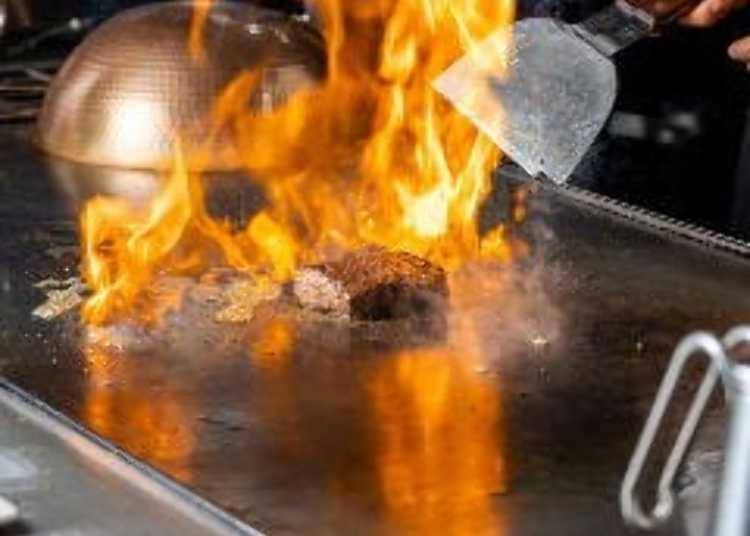
Teppanyaki Jun (Tokyo/Shibuya)
All-you-can-eat A5 wagyu steak in a buffet-style setting, complete with vegetables, fruits, and cakes. Great for travelers who want to experience unlimited wagyu in a lively atmosphere, with extra touches like surprise desserts for special occasions. See restaurant details here.
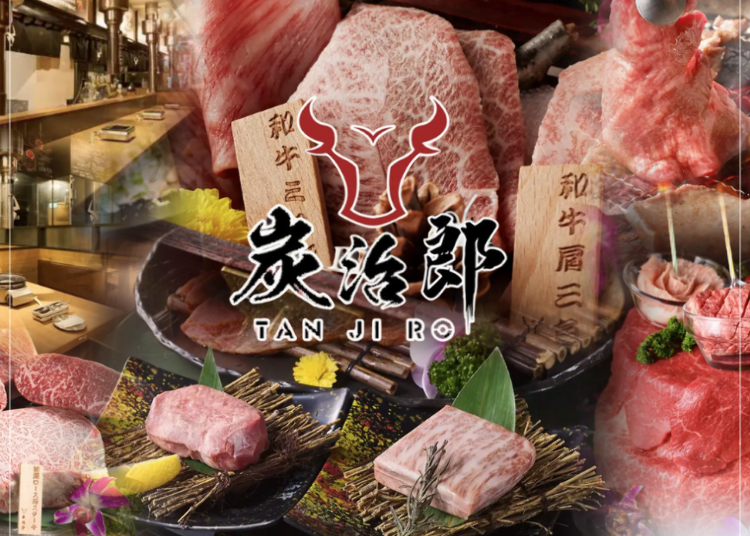
Tanjiro (Tokyo/Roppongi)
Just a minute from Roppongi Station, this yakiniku restaurant specializes in rare wagyu cuts like Zabuton and Ichibo, all grilled over Binchotan charcoal. Their all-you-can-eat menu makes high-end wagyu surprisingly accessible. See restaurant details here.

Watonkatsu Wagyukatsu Aburaya (Tokyo/Ikebukuro)
Housed in an 80-year-old traditional Japanese house, this spot offers crispy wagyu katsu (breaded cutlets) alongside nostalgic charm. A welcoming choice for those who want to try wagyu in a new and approachable style. See restaurant details here.
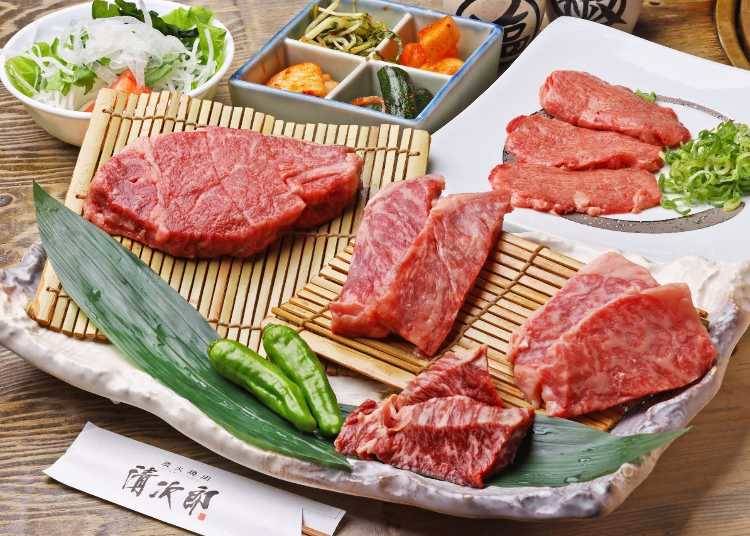
SEIJIRO Kitashinchi (Osaka)
Popular with international visitors, SEIJIRO offers premium Kobe beef and Kuroge Wagyu in private dining rooms. Lunch courses provide an affordable way to experience top-quality wagyu, while dinner makes for a refined evening out. See restaurant details here.
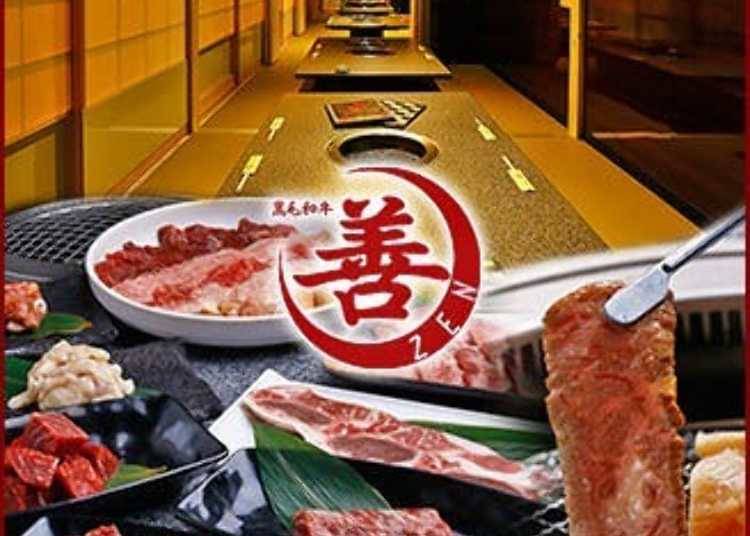
WAGYU YAKINIKU ZEN (Osaka/Namba)
Located just minutes from Namba Station, ZEN serves only A4 and above Kuroge Wagyu. Private rooms make it perfect for groups, and advance lunch reservations are available — ideal for travelers exploring central Osaka. See restaurant details here.
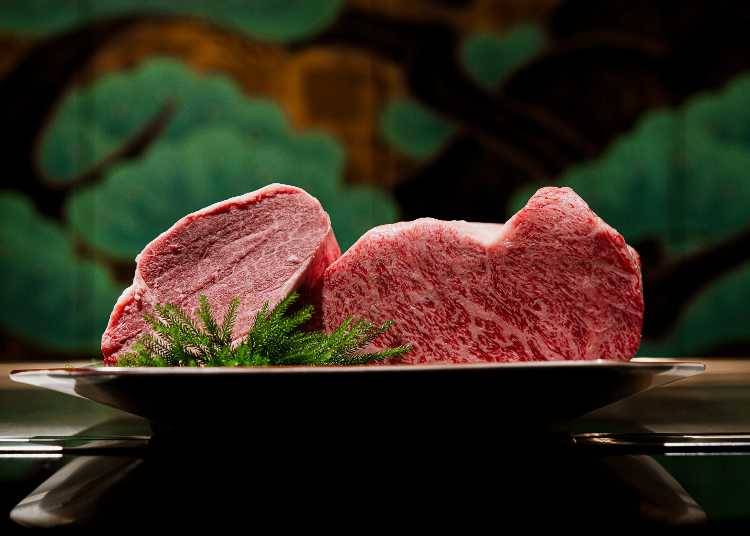
Wagyu Teppanyaki Steak House Nishiki MIYABI (Kyoto/Nishiki Market)
A short walk from Nishiki Market, MIYABI specializes in premium wagyu, including Kobe beef, prepared teppanyaki-style right in front of you. With Halal-certified options and flexible lunch and early dinner service, it’s a versatile stop for travelers. See restaurant details here.
Recommended Wagyu Restaurants on Klook
We also recommend these restaurants in addition to those above. Save time and hassle - book your table online today!
-
 Sagaya Ginza (佐賀牛SAGAYA銀座) in Ginza - Deluxe Wagyu BBQ
Sagaya Ginza (佐賀牛SAGAYA銀座) in Ginza - Deluxe Wagyu BBQ
Details & Bookings ▶
(Image: Klook) -
 Kobe Beef Nikubee Honten - Wagyu Yakiniku BBQ in Tokyo, Akasaka
Kobe Beef Nikubee Honten - Wagyu Yakiniku BBQ in Tokyo, Akasaka
Details & Bookings ▶
(Image: Klook) -
 Gyumaru (牛丸) in Shibuya - Wagyu BBQ
Gyumaru (牛丸) in Shibuya - Wagyu BBQ
Details & Bookings ▶
(Image: Klook) -
 ShabuZen in Ginza - Japanese Hotpot and Sukiyaki
ShabuZen in Ginza - Japanese Hotpot and Sukiyaki
Details & Bookings ▶
(Image: Klook)
(*1: According to NHK News as of February 2025)
(*2: According to JA Zen-Noh Meat Foods, August 2025)
The LIVE JAPAN editorial team is a multinational group made up of native editors who have lived in Japan for over five years and Japanese editors who love to travel. Together, we share the best of Japan, offering cultural insights, historical context, event updates, and travel-friendly deals, to support your journey every step of the way.
- Category
*Prices and options mentioned are subject to change.
*Unless stated otherwise, all prices include tax.
Popular Tours & Activitiess
Recommended places for you
-

Toritaki Ren
Teppanyaki
Sapporo / Chitose
-
Menu

Tarobou
Teppanyaki
Sendai And Matsushima
-
Menu

Kyoto Gion Steak KYOSAIEN HANAMIKOJITEN
Teppanyaki
Gion, Kawaramachi, Kiyomizu-dera Temple
-

KOUBEBIHFUDAININGUWAGYUUTOKKU
Teppanyaki
Shinjuku
-

Emperor Steak Shinjukukabukicho
Teppanyaki
Shinjuku
-
Menu

Shiroya Ginzatei
Teppanyaki
Ginza
-

This Winter, Godzilla Takes Over Haneda Airport
by: Guest Contributor
-

Jujutsu Kaisen Takes Over JR East With a Wrapped Shinkansen This Winter
by: Guest Contributor
-

First Japan Cherry Blossom 2026 Forecast Announced! Here's When & Where to See Sakura in Japan
-
Ad

Complete Guide to Ueno's National Museum of Nature and Science, the Perfect Place to Visit on Rainy Days or With Children
-

How to Get Don Quijote's Exclusive 2025-2026 Winter Gift (+Tax-Free Savings)
-
Ad

Discover the "Miraculous Forest" in the Heart of Tokyo: The Institute for Nature Study (9 Minutes from JR Meguro Station)
-

Okonomiyaki: Try Japan’s Favorite Soul Food at an Authentic Teppanyaki Restaurant
-

Kobe Beef in Japan: 3 Best Restaurants Near Sannomiya Offering Affordably Priced Kobe Beef!
-

These 18 Things to Do in Hakodate Will Make You Fall in Love With the Northern Wonderland
by: Guest Contributor
-

Niigata Bucket List: 26 Best Things to Do in Niigata Prefecture For Tourists (Attractions, Local Foods & Activities)
-

5 Popular Things to do in Umeda - Osaka's Central Area!
by: WESTPLAN
-

We Taste-Test Legendary Tajima Wagyu Beef to See if Wagyu Brands Really Taste Different
by: WESTPLAN
- #best sushi japan
- #what to do in odaiba
- #what to bring to japan
- #new years in tokyo
- #best ramen japan
- #what to buy in ameyoko
- #japanese nail trends
- #things to do japan
- #onsen tattoo friendly tokyo
- #daiso
- #best coffee japan
- #best japanese soft drinks
- #best yakiniku japan
- #japanese fashion culture
- #japanese convenience store snacks






















